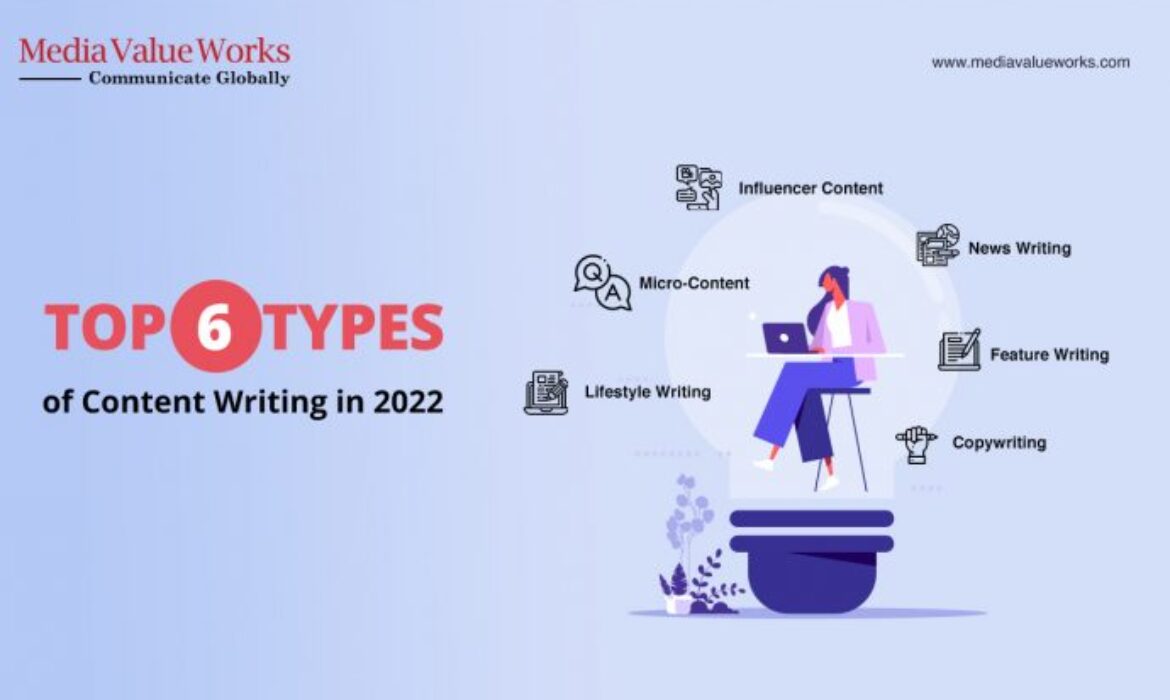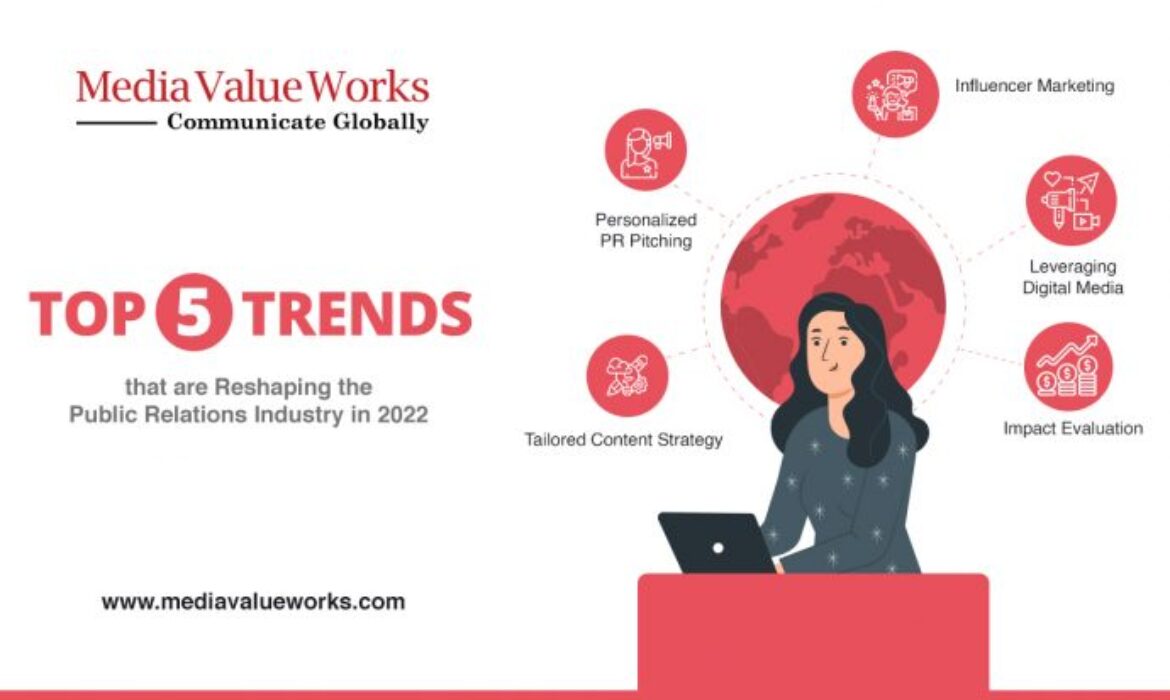Top 6 Types of Content Writing in 2022
With the increased penetration of technology and the internet, the content appetite has been amplified drastically. The rise of online media is dramatically altering the ways people consume content on a micro-level, creating a new user-centric communication model.
Content writing is the process of creating, editing, and publishing content for various formats such as social media copy, articles, press releases, video scripts, white paper, product descriptions, brochures, landing pages and more.
Let’s take a look at the top 6 types of Content writing in 2022:
1. Micro-Content
Microcontent conveys pieces of information that answer a specific question or leave an impression on the audience in a short period of time, which is entirely necessary for today’s audiences. It is written copy, imagery, or video content that can be consumed in 10-30 seconds or less. Infographics, short video clips, e-mail subjects, captions, webpage tiles, short listicles and precise social media posts can be segments of micro-content.
2. Influencer Content
Social media influencers who possess a dedicated social following and are viewed as experts within their niche creates content using endorsement and product mentions. The content strategy is to generate creative, splendid and pertinent content, which can be in the form of short video clips, photo uploads, storytelling, live product demos and more. Due to higher interaction with followers, the content generates a good impact on existing and potential followers. The endorsed and branded content serves as social proof to the brand’s potential customers and maintains brand identity.
3. News Writing
News writing is writing for publication in a newspaper, often reporting current events and journalism. It is the most sophisticated, comprehensive, and formal way of writing that follows an inverted pyramid structure. Lead (most important information comprises 5W and 1H), body (background details and expanding the topic) and tail (extra information, assessment and interesting facts). The news story should comprise elements of newsworthiness such as proximity, timeliness, human interest and conflict.
4. Feature Writing
A feature is a write-up on a subject of the latest concern and interest to a common reader. It is not a news story but derived from a piece of news. Features aimed at informing, entertaining, enlightening and providing facts in an exciting form for rapid reading. A broader explanation of the topic with relevant facts and background detail in an interesting way is the content strategy for writing features. The feature structure comprises the introduction, elaboration, elucidation, interpretation, a narration of facts, future possibilities and conclusion.
5. Lifestyle Writing
Lifestyle writing is all about covering stories that have human interest, positivity, hope and entertainment. It is an umbrella term for specialized beats such as travel, food, fashion, home décor, health, wellness, stories of celebrities and other soft beats. Readers often find it more exciting and wonderful to apply kinds of stuff in their life whenever there is some free time. Most people spend reading lifestyle stories. Here, the writing strategy is different and is human and soft information-centric, requiring research and looking for news angles.
6. Copywriting
Copywriting is the process of writing a persuasive piece of content that motivates people to take some action, such as making a purchase, clicking on the link, donating to a cause, scheduling an appointment etc. It comprises a clear message set using different advertising channels such as websites, print and digital ads, newspapers, magazines, and brochures. Businesses communicate effectively via copywriting with existing and potential customers to expand their market reach.
Over the period of time, the mode of communication expanded, which eventually led to content being copied, manipulated and misinterpreted. Media Value Works, on multiple fronts, understand the client’s business objectives and creates goal-oriented content for better reach among the target audience and offer end-to-end creative, communication-centric, complete content development services.
Contact us to learn how we can help you in developing in better content strategy for your business.
Credits:
Content: Vaibhav Chandra
Graphics: Shrikant Landge
Publisher: Media Value Works
Social Media: Ravish Dhiran
Top 5 Trends that are reshaping the Public Relations Industry in 2022
Public Relations (PR) is a set of strategic communication used by organizations or individuals to build and sustain relations amongst the target audience and various stakeholders. It envisages creativity, content curation, and reaching out to the target audience with exemplary communication efforts. Due to digitization, industrialization and global disruption, the human behavioral pattern has developed, so public relations’ role and working style has changed multifaceted.
The pandemic and technological trends like the utilization of online media, social media and digital marketing have reinforced the adoption of new-age technology for business development and effectively integrated marketing communication efforts which actively contributed to the transformation and expansion of the public relations industry.
Here are the top 5 notable trends that are reshaping the public relations industry in 2022:
1. Personalized PR Pitching
Communicating with key media with the same set of messages proved to be impotent as every journalist has a different mindset. Personalized pitches to specific journalists or influencers first present an eye-catching idea that is hard to miss. Second, tap directly on their interest to provide precise information in news-worthy content that maximizes the chance of being published by the targeted media outlets. It empowers PR professionals to create instant trust and nourish the relationship with media outlets and professionals who become supportive when pitching in the future.
2. Influencer Marketing
With the increased penetration of online and social media platforms, audiences have begun to trust peers’ recommendations as it generates curiosity regarding products or brands. People find more authenticity in content and recommendation from actual consumers, celebrities or influencers rather than in other forms of promotions and advertising.
Influencer marketing involves endorsements and product placement from influencers, people and organizations who have an expert level of knowledge or social influence in their field. They upload sponsored content on their social media platforms like Facebook, Instagram, YouTube, Twitter, LinkedIn, Snapchat, or other online channels.
3. Tailored Content Strategy for the greater outreach
A customized content strategy builds customer loyalty and meets the objectives because it directly meets the target audience and potential customers. Tailored content is all about delivering experiences that speak directly to target customers.
PR professionals must emphasize their content strategy efficiently, ensuring its uniqueness engages and reaches the target audience. Incorporating appropriate keywords and other SEO optimization tactics makes the content visible on initial search pages, increasing search engine rankings. The personalized content strategy supported by data analytics and conclusion from existing campaigns proves a great way to place the client’s brand in the right spots.
4. Leveraging the power of Digital Media
With the news earlier restricted to only the traditional means such as newspapers and magazines, the entry of this new medium transformed the landscape and made information and news available anytime, anywhere.
From online press releases and sharing on social media platforms, the possibilities of digital PR are endless. With Web 3.0, marketing communication horizons are expanding further and brands can extend their presence into the digital world and gain immense publicity across the platforms that their target audience uses.
5. Impact Evaluation
In the Public Relations domain, it’s a challenge to show the impact generated as it is less tangible than other services. All clients want to know the impression created and whether the money, time and efforts that went into a campaign changed consumer behaviour and profit generated.
To prove the campaign’s ROI, meaningful metrics that relate directly to business goals and objectives are required. PR firms can create winning strategies, deploy them through suitable platforms, and create and measure campaign success metrics.
Credits:
Content: Vaibhav Chandra
Graphics: Shrikant Landge
Publisher: Media Value Works
Social Media: Ravish Dhiran




